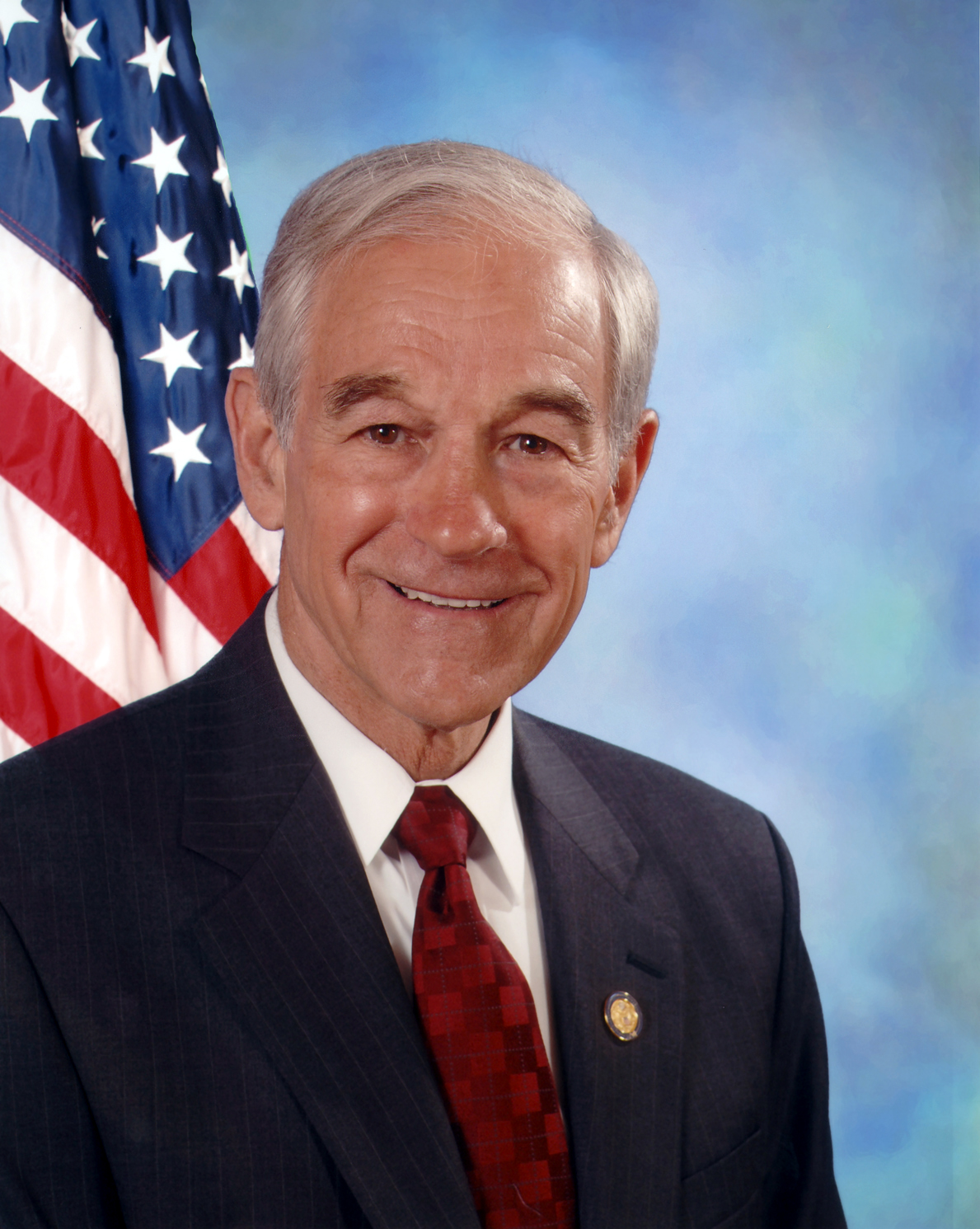The House congressional investigating committees are still under Republican majority control. Why haven't they complied in their US Gold Reserves transparency commitment to the American people? Americans should be reaching their own consensus as to the guilty persons when this crime is brought to justice under a restored rule of law.
Ron Paul's Fort Knox Fever
 |
| Fmr. Rep. Ron Paul (R-TX) |
Paul isn't so sure the nation's supply of gold is all accounted for and thinks it might not exist at all. He has introduced legislation that would require an independent count of the 5,000-plus tons of gold bullion that's sacked away in the Kentucky vault, as well as smaller amounts held in government facilities in Denver, West Point, and New York City. Paul also wants a lab to test the bars, to prove it's as pure as the U.S. Treasury Dept. says.
Paul, who has said he thinks it's possible there is no gold at Fort Knox, told Bloomberg Businessweek the government is asking the American people to trust that all the gold is there, while not allowing site visits and not publishing all the data.
As chairman of a House Financial Services subcommittee that oversees the gold stores, Paul called a hearing on the matter for June 23. One man who's looking forward to refuting the congressman's doubts: the person in Washington who has actually held those gleaming, 27-pound gold bars in his own hands. Eric M. Thorson, the inspector general of the Treasury, is responsible for keeping track of the U.S. Mint's deep storage gold and silver reserves. Last September, he became the first outsider in 37 years to be granted full access to the U.S. Bullion Depository, as Fort Knox is formally known.
Opened in 1937, the vault is encased in 16,000 cubic feet of granite and 4,200 cubic yards of concrete. The depository is a classified facility, the Mint notes on its website. No visitors are permitted, and no exceptions are made. Until September, even Thorson and his team of auditors had never stood in the presence of all the gold. Their annual reviews mostly consisted of making sure the locked compartments hadn't been opened. At the time, the tamper guards were decidedly 18th century: Each door was secured with special tape and sealing wax.
Last year the Mint upgraded to a high-security cable lock. With Thorson watching, the seals were broken. Thorson stepped inside the compartment. It is a staggering amount of gold, he says. It loses its meaning to look at it.
Thorson tried to reassure Paul that the loot is all there. I can tell you unequivocally that the gold reserves do exist in the amounts reported, and the controls over it ensure absolute security, he wrote Paul in a letter. He never heard back. The congressman's two-page bill, introduced in April, calls on the Treasury to conduct a full audit of the gold. The Government Accountability Office would then review the results. It also orders a full assay of the government's gold reserves. A small portion of each of the approximately 700,000 gold bars would be extracted and tested for purity. According to Treasury estimates, testing all that gold would take 400 people working full time for six months to complete and cost at least $15 million. Paul now says he would be satisfied with a representative sampling of the bullion.
Since the U.S. bucked the gold standard in 1971 and stopped redeeming currency for precious metal, the reserve no longer serves an essential function. Paul and other Republicans have advocated selling it to help ease the nation's debt burden. At today's price of $1,500-plus an ounce, its worth about $395 billion—a handsome sum, though barely enough to scratch the $14 trillion debt.
It's doubtful that the gold will be sold or that Paul's audit will happen. The idea has yet to attract much support and is expected to wither. It's the implication that the government has made off with the gold as part of some undefined conspiracy that bothers Thorson. It's irresponsible to say this without the evidence to back it up, he says. I have the evidence. I personally saw it.
The bottom line: Paul's theory that U.S. gold reserves may be missing plays to the conspiracy crowd—and would cost a mint to disprove. [It certainly didn’t ‘cost a mint’ to build it by stealing it all from the American citizens!...CV]
Source businessweek- H.R. 1495: Gold Reserve Transparency Act of 2011 , GAO-11-768T: Published: Jun 23, 2011
- Here’s the PDF paper audit of what our congress accepted as a lawful compliance 2011 audit in HR1495 “Gold Reserve Transparency Act”. No evidence of physical inventory being taken by GAO or independent party observers. What they received was a throwback audit to 1974.
- Source PDF
>In 1974, in response to congressional interest and in conjunction with the Mint, GAO assisted in the planning and observed the inventory of gold reserves of the United States maintained by the United States Bullion Depository at Fort Knox.4 GAO selected 3 of the 13 compartments at this depository to be audited. The audit procedures included observing and participating in a physical inventory of the entire contents of the three compartments. GAO did not report any differences between the gold stored in these compartments and the Fort Knox depository’s records. In addition, GAO’s procedures included observing the assaying of a sample of gold bars. The results of the assays indicated that the recorded finenesses were within the tolerances the Mint established.